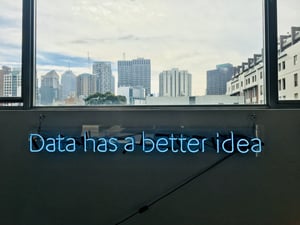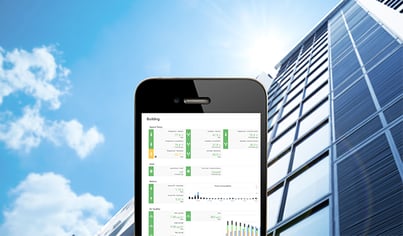Technology has never been for the sake of technology. The Internet of Things (IoT), for example, must have relevance in the broader picture of driving a tangible outcome for an enterprise.
What is the broader picture? The Data Economy. In one description, the broader context that demands greater technological engagement can be described as follows:
“It is the emerging economy in which organizations succeed or fail based in large part on their ability to leverage data and analytics to improve operational efficiencies, to make better tactical and strategic decisions, and to create innovative products, services and business models to meet & exceed customer expectations.”
Success or failure of an organization depends on their ability to adapt to the emerging economy. The current shift from hardware to services represents an immediate challenge to organizations that will either (1) fail to adapt, or (2) execute an effective business transformation strategy.
They key to effective business transformation? The ability to leverage data and analytics. Therein lies the heart of the new Data Economy. Do you want to improve operational efficiencies, or make better tactical and strategic decisions? These gains are often in the realm of Operational Technology, which happens to be the playground of IoT.
Leveraging New Data Sources to Deliver Competitive Advantage
The emerging Data Economy necessitates access to new data sources. It’s always healthy to look back at predictions regarding the emerging Data Economy. One prediction anticipated some key emerging trends seen today:
- By 2020, 10% of organizations will have a highly profitable business unit specifically for productizing and commercializing their information assets.
- By 2018, over half of large organizations globally will compete using advanced analytics and proprietary algorithms, causing the disruption of entire industries.
- By 2020, only 50% of chief analytics officers will have successfully created a narrative that links financial objectives to business intelligence and analytics initiatives and investments.
- By 2019, 75% of analytics solutions will incorporate 10 or more exogenous data sources from second-party partners or third-party providers.
Few would disagree that these macro trends highlighted a few years ago are currently playing themselves out amongst modern enterprises. The perceived cutting edge of yesterday has become the mainstream today.
Of course, how much data do you really need? It is a fair question to ask. Ultimately, the data an organization chooses to harvest should be targeted to drive a financial objective. Operational efficiencies in various forms can be achieved using operational insights based on the collection of real-time data. The Smart Building Market represents one example of industry digitization trends pushing organizations to innovate as part of their digital strategy.
Acquiring a Competitive Advantage Through New Data Sources
The participation by organizations in the emerging Data Economy is dependent on securing access to new strategic data sources. These strategic data sources may not be available or acquirable by organizations on their own. Organizations may need to rely on contractors or technology partners to gain access. A simple example of such an organizational limitation is the relative inexperience most organizations have with the IoT Technology Stack, which drives modern real-time SaaS Application development. The new data insights generated by SaaS Applications that leverage the IoT Technology Stack will drive new products and services in the emerging Data Economy.
How does an organization invest to compete in the emerging Data Economy? One game plan focuses investment in three critical areas: technology, people, and culture. Let’s focus on the most tangible of the three, Technology.
“Enterprises must invest in new technologies and processes that enable the ability to ingest, analyze, and act on streaming data from all manner of sources in real time and develop closed-loop feedback systems to continually optimize business processes, while simultaneously supporting deep, historical analytics capabilities to identify strategic insights.”
While that sounds like a tall order, a modern SaaS Application developed as part of an IoT Technology Stack fits the bill.
What type of data does your organization need access to in order to execute your corporate product/service roadmap? If you know the type of data you need, then the next step is to identify the technology you need to gain access. Most organizations today face the dilemma of developing the IoT technology themselves or finding an IoT technology partner that will provide access to those critical data resources. One way or another, investment in technology will represent the gateway to analytics and actionable insights needed to execute today’s strategic corporate initiatives.
Conclusion
In the emerging Data Economy, data is a strategic asset. As such, securing those strategic assets represents the battleground for most enterprises using technologies such as IoT. Without access to those strategic assets, enterprises will be unable to drive operational efficiencies through data -driven decision-making. The status quo is a fine business strategy to compete in yesterday’s economy, not the Data Economy emerging quickly right in front of us.

